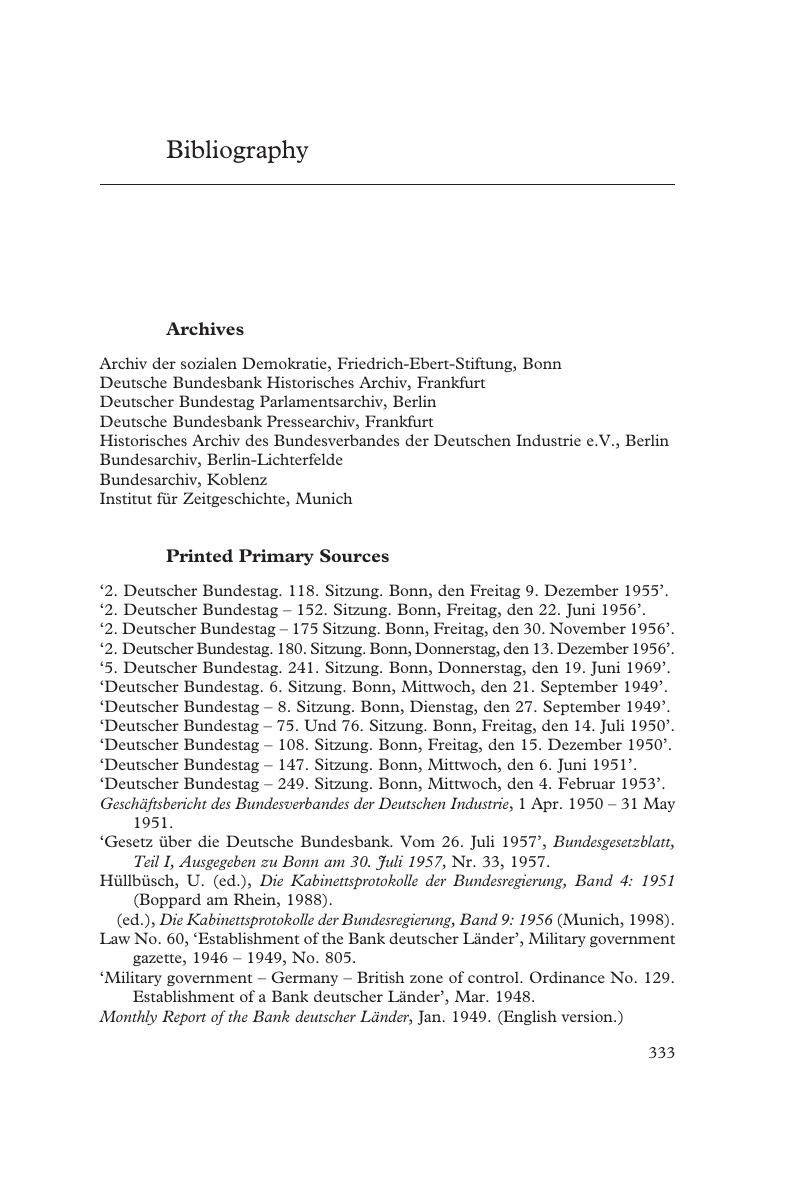Book contents
- Central Bank Independence and the Legacy of the German Past
- Central Bank Independence and the Legacy of the German Past
- Copyright page
- Dedication
- Contents
- Figures
- Tables
- Acknowledgements
- Abbreviations
- Introduction
- 1 In Search of the Reichsbank
- 2 The Bank deutscher Länder and the Foundation of West Germany, 1948–1951
- 3 Adenauer’s Challenge: The ‘Gürzenich Affair’ and the Bank deutscher Länder, 1956–1957
- 4 The Shadow of National Socialism: Karl Blessing and the Bundesbank in 1965
- 5 The Bundesbank, Social Democracy and the Era of the ‘Great Inflation’, 1970–1978
- Conclusion
- Bibliography
- Index
- References
Bibliography
Published online by Cambridge University Press: 13 September 2019
- Central Bank Independence and the Legacy of the German Past
- Central Bank Independence and the Legacy of the German Past
- Copyright page
- Dedication
- Contents
- Figures
- Tables
- Acknowledgements
- Abbreviations
- Introduction
- 1 In Search of the Reichsbank
- 2 The Bank deutscher Länder and the Foundation of West Germany, 1948–1951
- 3 Adenauer’s Challenge: The ‘Gürzenich Affair’ and the Bank deutscher Länder, 1956–1957
- 4 The Shadow of National Socialism: Karl Blessing and the Bundesbank in 1965
- 5 The Bundesbank, Social Democracy and the Era of the ‘Great Inflation’, 1970–1978
- Conclusion
- Bibliography
- Index
- References
Summary

- Type
- Chapter
- Information
- Central Bank Independence and the Legacy of the German Past , pp. 333 - 345Publisher: Cambridge University PressPrint publication year: 2019



